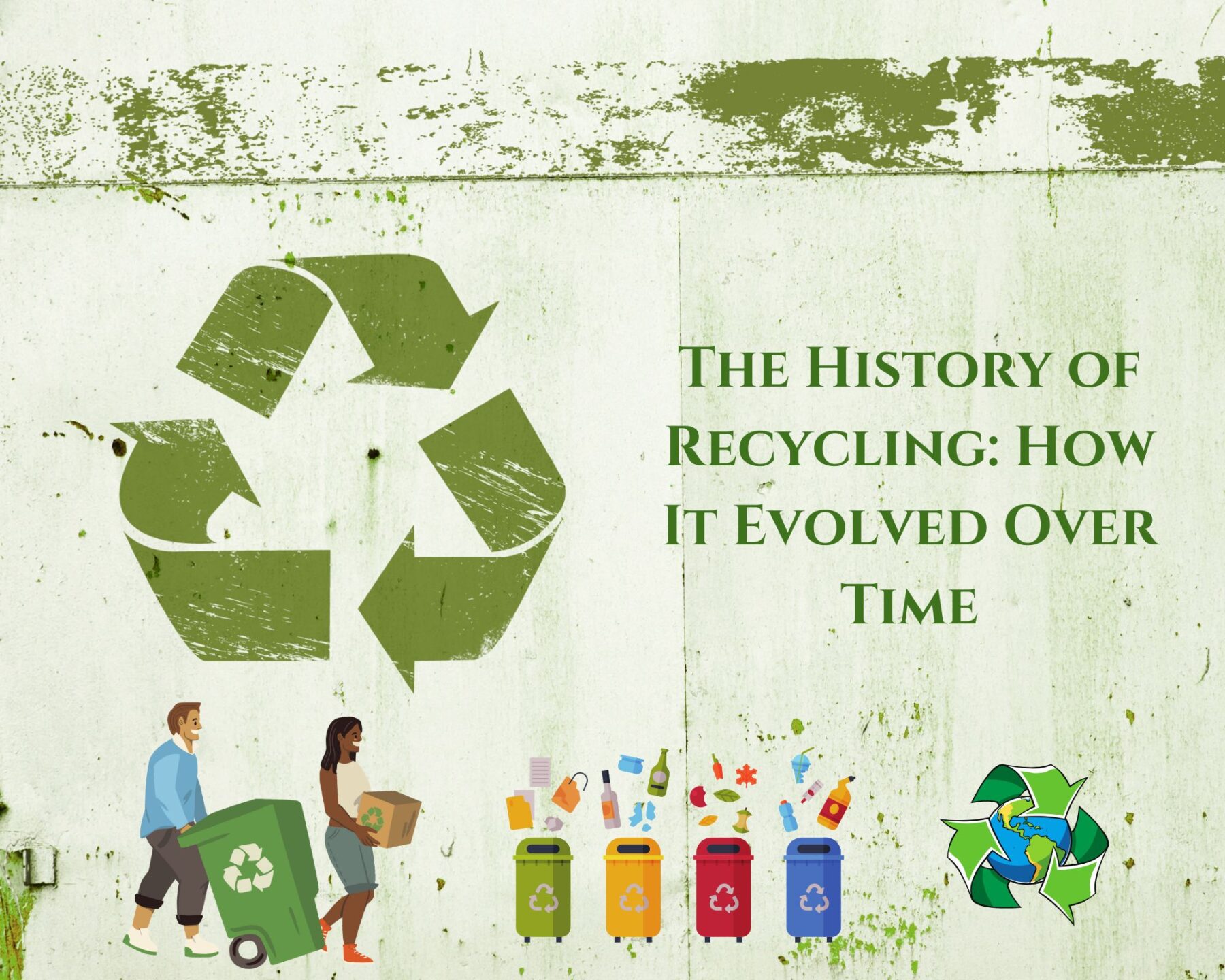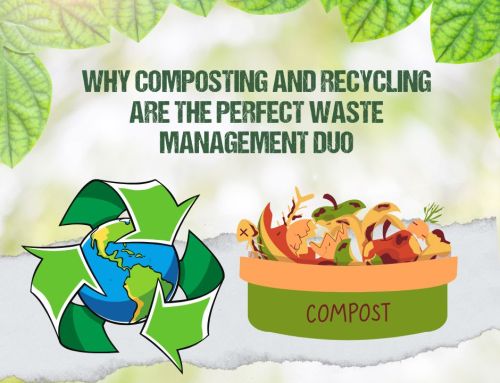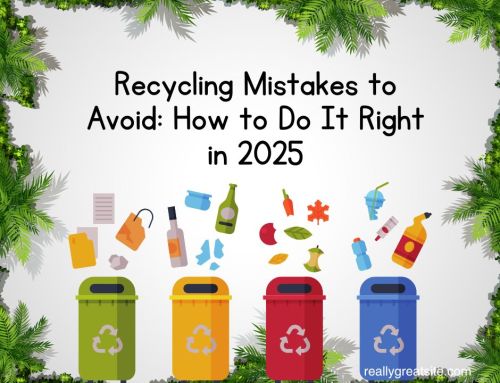The History of Recycling: How It Evolved Over Time
Recycling, the process of converting waste materials into new products, is a concept that has been around for centuries. While modern recycling practices have advanced significantly, the roots of recycling trace back to ancient civilizations. Let’s take a journey through time to explore the evolution of recycling, highlighting significant milestones and how practices have changed over the years.

Ancient Recycling Practices
The earliest evidence of recycling dates back to ancient times. Archaeological findings suggest that as early as 400 BC, humans were recycling metals. In ancient Rome, metal scraps were melted down and repurposed for various uses. Similarly, ancient Japanese and Chinese civilizations recycled bronze and other metals to create new tools and artifacts. These early recycling efforts were driven by the scarcity of materials and the need to maximize resource utilization.
The Industrial Revolution and Recycling
The Industrial Revolution, which began in the late 18th century, marked a significant turning point in the history of recycling. The rapid industrialization led to increased production and consumption, resulting in more waste. During this period, recycling became a more organized practice. For instance, in the 19th century, the rag-and-bone men in England collected rags, bones, and other materials for reuse. These materials were processed and repurposed into new products, such as paper and glue.
The Rise of Modern Recycling
The modern recycling movement began to take shape in the mid-20th century. The post-World War II era saw a surge in consumerism and a corresponding increase in waste. In response, environmental awareness grew, and recycling initiatives gained momentum. The first curbside recycling program was introduced in 1973 in the United States, in Woodbury, New Jersey. This program allowed residents to separate recyclable materials from their household waste, laying the foundation for widespread recycling efforts.
Significant Milestones in Recycling
Several key milestones have shaped the evolution of recycling over the years:
- 1970s Environmental Movement: The environmental movement of the 1970s played a crucial role in promoting recycling. The first Earth Day, celebrated in 1970, raised awareness about environmental issues and encouraged individuals and communities to adopt recycling practices.
- Introduction of the Recycling Symbol: In 1970, the iconic recycling symbol was created by Gary Anderson, a student at the University of Southern California. The symbol, featuring three chasing arrows forming a triangle, became a universal representation of recycling and sustainability.
- Development of Recycling Legislation: Throughout the 1980s and 1990s, various governments implemented recycling legislation to promote waste reduction and resource conservation. For example, Germany introduced the Green Dot system in 1991, which required manufacturers to take responsibility for the recycling of their packaging materials.
The Digital Age and Recycling
In recent years, the digital age has introduced new challenges and opportunities for recycling. The proliferation of electronic devices has led to a significant increase in electronic waste, or e-waste. Proper disposal and recycling of e-waste have become critical to prevent environmental contamination and recover valuable materials. Additionally, technological advancements have improved recycling processes, making them more efficient and sustainable.
The Future of Recycling
As we look to the future, recycling will continue to evolve in response to emerging challenges and opportunities. Innovations in recycling technology, such as advanced sorting systems and chemical recycling, hold promise for improving recycling rates and reducing waste. Moreover, the growing emphasis on circular economy principles, which aim to keep resources in use for as long as possible, will drive further advancements in recycling practices.
Conclusion
From ancient metal repurposing to modern curbside recycling programs, the history of recycling is a testament to humanity’s ingenuity and adaptability. As we continue to navigate environmental challenges, the evolution of recycling will play a crucial role in building a more sustainable and resource-efficient future. By understanding the past, we can better appreciate the importance of recycling and inspire future generations to contribute to a cleaner, greener planet.
Share This Story, Choose Your Platform!
The History of Recycling: How It Evolved Over Time
Recycling, the process of converting waste materials into new products, is a concept that has been around for centuries. While modern recycling practices have advanced significantly, the roots of recycling trace back to ancient civilizations. Let’s take a journey through time to explore the evolution of recycling, highlighting significant milestones and how practices have changed over the years.

Ancient Recycling Practices
The earliest evidence of recycling dates back to ancient times. Archaeological findings suggest that as early as 400 BC, humans were recycling metals. In ancient Rome, metal scraps were melted down and repurposed for various uses. Similarly, ancient Japanese and Chinese civilizations recycled bronze and other metals to create new tools and artifacts. These early recycling efforts were driven by the scarcity of materials and the need to maximize resource utilization.
The Industrial Revolution and Recycling
The Industrial Revolution, which began in the late 18th century, marked a significant turning point in the history of recycling. The rapid industrialization led to increased production and consumption, resulting in more waste. During this period, recycling became a more organized practice. For instance, in the 19th century, the rag-and-bone men in England collected rags, bones, and other materials for reuse. These materials were processed and repurposed into new products, such as paper and glue.
The Rise of Modern Recycling
The modern recycling movement began to take shape in the mid-20th century. The post-World War II era saw a surge in consumerism and a corresponding increase in waste. In response, environmental awareness grew, and recycling initiatives gained momentum. The first curbside recycling program was introduced in 1973 in the United States, in Woodbury, New Jersey. This program allowed residents to separate recyclable materials from their household waste, laying the foundation for widespread recycling efforts.
Significant Milestones in Recycling
Several key milestones have shaped the evolution of recycling over the years:
- 1970s Environmental Movement: The environmental movement of the 1970s played a crucial role in promoting recycling. The first Earth Day, celebrated in 1970, raised awareness about environmental issues and encouraged individuals and communities to adopt recycling practices.
- Introduction of the Recycling Symbol: In 1970, the iconic recycling symbol was created by Gary Anderson, a student at the University of Southern California. The symbol, featuring three chasing arrows forming a triangle, became a universal representation of recycling and sustainability.
- Development of Recycling Legislation: Throughout the 1980s and 1990s, various governments implemented recycling legislation to promote waste reduction and resource conservation. For example, Germany introduced the Green Dot system in 1991, which required manufacturers to take responsibility for the recycling of their packaging materials.
The Digital Age and Recycling
In recent years, the digital age has introduced new challenges and opportunities for recycling. The proliferation of electronic devices has led to a significant increase in electronic waste, or e-waste. Proper disposal and recycling of e-waste have become critical to prevent environmental contamination and recover valuable materials. Additionally, technological advancements have improved recycling processes, making them more efficient and sustainable.
The Future of Recycling
As we look to the future, recycling will continue to evolve in response to emerging challenges and opportunities. Innovations in recycling technology, such as advanced sorting systems and chemical recycling, hold promise for improving recycling rates and reducing waste. Moreover, the growing emphasis on circular economy principles, which aim to keep resources in use for as long as possible, will drive further advancements in recycling practices.
Conclusion
From ancient metal repurposing to modern curbside recycling programs, the history of recycling is a testament to humanity’s ingenuity and adaptability. As we continue to navigate environmental challenges, the evolution of recycling will play a crucial role in building a more sustainable and resource-efficient future. By understanding the past, we can better appreciate the importance of recycling and inspire future generations to contribute to a cleaner, greener planet.




